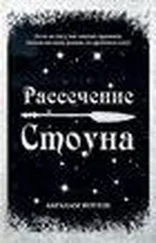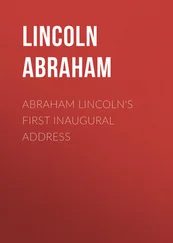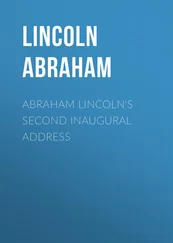The liver's smooth and shiny outer surface is monotonous and unexciting, and apart from a median furrow dividing it into a large right lobe and a smaller left, it has no visible cleavage planes. It is a surprise to find surgeons speak about its eight anatomical “segments”—as if they are discrete, as if they are like sections of an orange. Try pulling these segments apart and you'll have raw surfaces oozing blood and bile and a very dead patient. Still, the idea of segments allows the surgeon to define areas of liver that have a full complement of blood and bile conduits and that are therefore semiautonomous units, subfactories within the factory.
Four families of vessels enter or leave the liver. First, the portal vein, which carries all the venous blood leaving the gut and hauls it to the liver, blood that after a meal is rich in fats and other nutrients for the factory to process. The hepatic artery brings oxygen-rich blood to the liver from the heart via the aorta. The hepatic veins have the task of taking all the spent blood that has filtered through the liver and returning it to the heart via the vena cava. The bile formed by each liver cell gathers in tiny bile tributaries that merge and grow and eventually form the common bile duct that then empties into the duodenum. Excess bile is stored in the gallbladder, which is nothing more than a balloonlike offshoot of the bile duct. In keeping with the liver's chaste and understated demeanor, the gallbladder is tucked out of sight, just under the overhang of the liver.
DEEPAK, STANDING ON THE RIGHT, made the incision. The first step was to remove Shiva's gallbladder. Then, turning his attention to the stalk of vessels entering the liver (the porta hepatis), he dissected out the right hepatic artery, then the right branch of the portal vein and the right biliary duct. To get the right lobe free, he also had to cut through liver tissue and disconnect the hepatic veins at the back where they joined the vena cava—the dark side of the liver, the place where the surgeon might “see God” if there was bleeding. In removing a lobe of the liver for cancer, it is possible to control bleeding by pinching off the stalk of blood vessels in the porta hepatis —the Pringle maneuver. But this wasn't an option for Deepak, because it would compromise the function of the lobe they were removing, choke it half to death before giving it to me. There are now ultrasonic and even radio-frequency “dissectors” that make cutting through the liver easier, less bloody. But Deepak, with Thomas Stone as his assistant, had to resort to clamp crushing and “finger fracturing” to break through the liver tissue while avoiding the major blood vessels or bile ducts. Deepak worried about his senior partner: Thomas Stone's mind seemed to wander, something Deepak had never encountered before. Little did Deepak know that Stone was struggling to keep away the image and the memory of his futile efforts to save Sister Mary Joseph Praise, and his dangerous attempts at crushing a baby's skull.
The donor operation went without a hitch. At 9:00 a.m., I was wheeled into the operating room, and at 9:30 a.m., just as Shiva's right lobe was coming free, the Boston General team, without Thomas Stone, made a long incision across my middle, below my rib cage but above my belly button. They began mobilizing my liver, cutting away its ligaments and trusses.
Thomas Stone took Shiva's freed right lobe to a side table, where, with hands that were steadier than his insides, he flushed the portal vein with University of Wisconsin solution. Deepak, meanwhile, ensured that there were no bile leaks in the raw edge of what remained of Shiva's liver, which was largely his left lobe. He looked all around for any overlooked bleeders, repeated the sponge and instrument count twice, and then he closed Shiva's belly. In a month, Shiva's liver would regenerate to its previous size.
Now, Thomas Stone and Deepak donned fresh gowns and gloves and came to me to complete the removal of my liver. Because my clotting functions were poor, there were lots of tiny bleeders, particularly behind my liver as they freed it from the diaphragm. I required many units of blood as well as platelets. They carefully identified and preserved my bile duct, the hepatic artery, and the portal vein. It was one in the afternoon when my four-and-a-half-pound companion, which I had sheltered under my rib cage all these years, left me. A gaping cavity under the dome of my right diaphragm, an unnatural void, remained.
Connecting Shiva's liver, or rather his right lobe, was a laborious process. Bleeding had to be meticulously controlled in order to see clearly and for Thomas Stone, with Deepak's assistance, to suture artery to artery, bile duct to bile duct, and vein to vein. The scissors and needle holders were specially designed for microsurgery. Both surgeons wore headlights and magnifying loupes as they manipulated sutures that were finer than a human hair. One advantage of Deepak's decision to give me Shiva's right lobe was that it fit more naturally under the dome of my diaphragm, and its hilum—the place where the vessels entered—was oriented more naturally toward the vena cava. It made the surgeons’ jobs a little easier.
The remnants of the D team took Shiva to the recovery room and then waited in the locker room. Their mood unexpectedly became somber. It was now out of their hands, and that made the tension almost unbearable.
An anxious Hema, with Vinu at her side, watched the clock in the waiting room. At first, she was thankful for her chatty companion, but then even he could not distract her. She kept thinking of Ghosh and wondering if he would have chastised her for letting Shiva take such a risk. A stone in hand … or was it “bird”? Grass is greener … he would have a maxim for the situation.
Word came from the operating room via the Ringmaster—he called at each stage of the operation—and Hema now wished he wouldn't, because the shrill ring never failed to startle her and made her imagine the worst, only to be told “They have begun” or “The portal vessels have been isolated” when what she wanted to hear is that they were done with Shiva. At last, she did hear those words, and soon she saw Shiva, awake but groggy in the recovery room and wincing in pain. She was giddy with joy, stroking Shiva's hair, and she knew that wherever he was, whatever form his reincarnation had taken, Ghosh, too, was relieved.
Shiva's eyes, coming into focus, asked the question. “Yes,” Hema said. “They're putting your liver lobe into Marion right now. Deepak said the part you donated looked magnificent.”
She wasn't allowed to stay long. Instead of returning to the waiting room, she decided to slip away to the chapel. A solitary stained-glass window allowed in very little light. When the heavy door closed behind her, she had to seek the pew with her hand and ease into the velvet-covered bench. She covered her head respectfully with the tail of her sari. As her eyes adjusted, she got the fright of her life, seeing a figure on its knees near the altar. An apparition! she thought. Then she remembered the prayer chain for Marion, the round-the-clock vigil in this chapel. As her pulse recovered, Hema settled back and observed the veiled head, the scapular falling back, stiff and separate from the pleated tunic. Hema realized that in importuning every deity she could think of, she had somehow neglected to appeal to Sister Mary Joseph Praise. The oversight caused a fierce and silly panic, blood surging up her neck. Oh, please don't let that be a reason to punish my son. She wrung her hands, squirmed and chastised herself for forgetting. Forgive me, Sister, but if you only know how stressful this has been, and if it is not too late, please watch over Marion, please see him through.
Читать дальше












